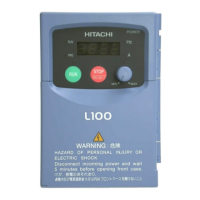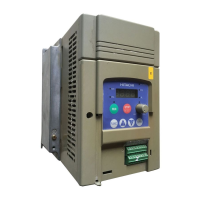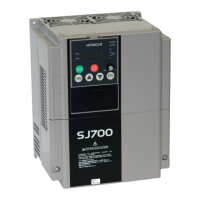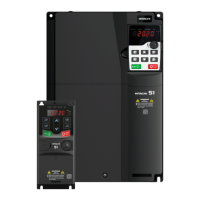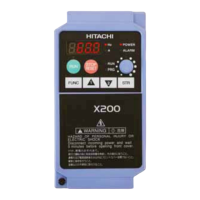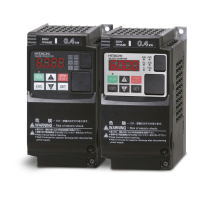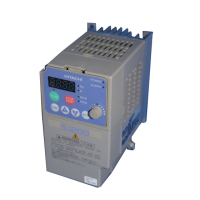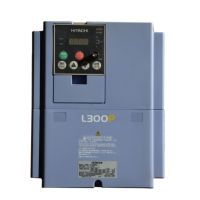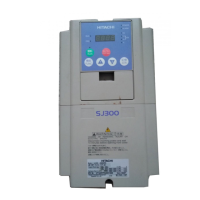[4] APR Control
You can control the motor by a pulse
train input on SJ300 with SJ-FB.
Make STAT terminal ON to get
started. (Inverter starts to accept pulse
train input after STAT is turned ON.)
SJ300 controls the motor based on the pulse train input to SAP, SAN, SBP, SBN which are 90 degrees phase
difference of A, B signals. Please see below for the simplified block diagram of the control.
<Explanation of the performance>
If the control system is in a stable state, it
performs like figures shown right. Feedback will
be 1
st
order lag against the reference because of
PI control. (Ignoring the Overshoot.)
Making STAT signal ON while there is a
continuous pulse train input result in a constant
increasing of θ*. (θ* will not be a step change
because it is a number of pulses.) In this case
feedback θ will be fixed according to the APR
response during t1 period.
In t2 period, feedback θ will be stabilized by
APR and therefore it will be in a constant
increasing mode together with the reference (θ*).
Therefore, ω (=G1⋅(θ*-θ)), which is the output or APR block will be in a increasing (not a constant increasing)
mode during t1 period and will be stable in t2 period.
ASR block receives the ω* and controls the system to make ε (= ω* - ω) to be 0. (see above figure.) and output
of this block will be forwarded to next block.
EAP
EAN
EBP
EBN
EZP
EZN
Encoder
M
SJ300
EP5
EG5
SAP
SAN
SBP
SBN
0
0
0
0

